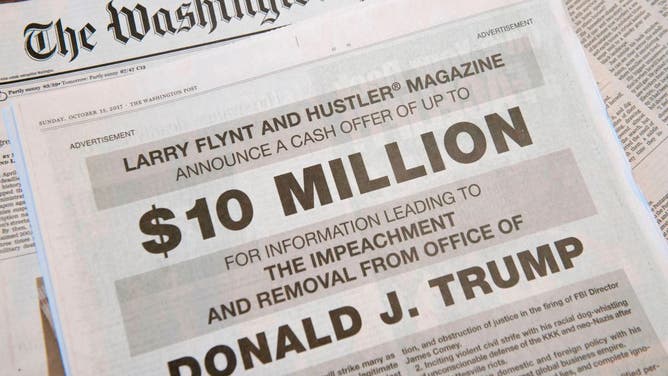We support our Publishers and Content Creators. You can view this story on their website by CLICKING HERE.
The Washington Post wants its readers to know that it remains an anti-Trump publication.
On Thursday, the news site Semafor reported that the paper rolled out an ad blitz at the start of the week, paying social media sites like Facebook to boost its articles that were particularly negative toward Donald Trump.
“Like many news organizations, the Post pays a small amount each month to show articles in feeds on Facebook and other social media platforms. But on Monday, the paper aggressively ramped up its paid advertising campaign, boosting dozens of articles related to the election,” the report begins.
“While the articles about Vice President Kamala Harris were relatively neutral in tone and focused on her innovative digital strategy, her policy proposals, and her chances of winning next week, the articles that the Post paid to highlight about Trump told a different story.”
Specifically, the publication boosted articles criticizing Trump’s campaign rhetoric, his misstatements, his allies’ attempts to “energize him as he struggles to adapt to Harris,” how his campaign damaged Springfield, Ohio, his fixation on the fictional serial killer Hannibal Lecter, how crowds leave his rallies early, and his questioning of the results of the 2020 election
The Post’s decision to remind users of its negative coverage of Trump is an obvious attempt to win back liberal subscribers who canceled the publication in the wake of the paper’s non-endorsement of Kamala Harris last Friday.
According to NPR, more than 250,000 subscribers — 10% of the paper’s subscriber base — canceled their subscriptions after left-wing influencers launched a “cancelation movement” in response to owner Jeff Bezos ordering the paper to avoid an official presidential endorsement.
Bezos defended the decision in a subsequent op-ed, acknowledging that an endorsement would only further diminish the trust Americans have in the mass media, which remains at an all-time low (per Gallup).

A photo taken on October 15, 2017 in in Washington, DC shows a full-page newspaper advertisement in the Washington Post offering 10 million dollars from Hustler Magazine publisher Larry Flynt for information leading to the impeachment and removal from office of US President Donald Trump. “I do not expect any of Trump’s billionaire cronies to rat him out, but I am confident that there are many people in the know for whom $10 million is a lot of money,” Flynt said in the ad. The porn magazine founder noted that he had used million dollar cash rewards before to elicit information that helped upend the careers of two Republican politicians. / AFP PHOTO / SAUL LOEB (Photo credit should read SAUL LOEB/AFP via Getty Images)
We had hoped Bezos’ defiance would lead to the paper embracing a more moderate political stance. But the disproportionate promotion of anti-Trump coverage suggests otherwise—unless, of course, some disgruntled leftist editor made the call without Bezos’s input.
In 2016, The Post took a hard left turn as it sought to discredit Trump’s presidency as a product of Russian interference. No honest person could have considered the paper’s coverage of politics since 2016 honest or balanced.
The Post has lost all credibility, essentially emerging as the MSNBC of newspapers.
And while the paper was a card-carrying member of the Cool Kids’ Club of News Media, the results of its turn were damning. In 2023, The Post reported a loss of $77 million and a 50% drop in audience since 2020.
So, changes were needed before the non-endorsement hysteria.
“Prior to Monday, the paper had run just around a dozen ads all month on Facebook, which largely featured simple Post branding without any mention of Trump. Monday’s paid Facebook push was a clear acknowledgment that the paper hopes to win back some of the anti-Trump subscribers that may have canceled” the Semafor article adds.”
It’s also a demonstration of just how much the Post is reliant on liberal readers opposed to Trump for revenue. Instead of using the opportunity to boost its tech or culture coverage, the paper leaned more into what it knows converts readers into subscribers: Its critical reporting and op-eds about the former president.”

 Conservative
Conservative  Search
Search Trending
Trending Current News
Current News 





